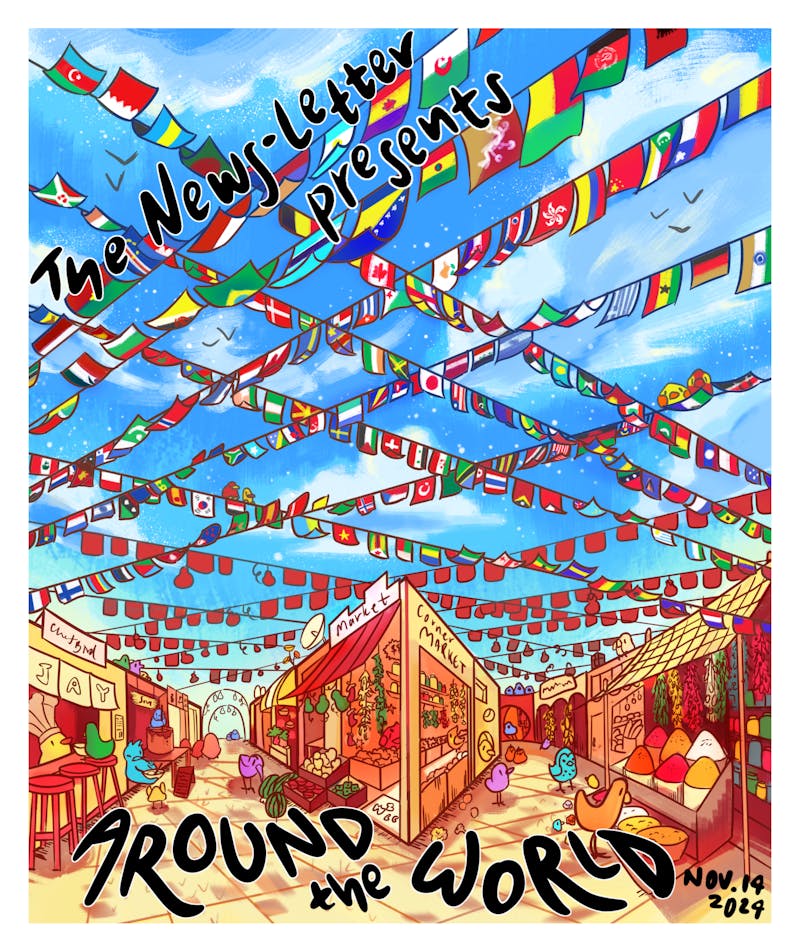At 1 a.m. last Saturday, delegates to the United Nations were dragged from their beds and immediately brought to committee. The North Korean nuclear arms situation had become an imminent problem demanding prompt resolution.
Thus, 30 of the 700 high school students participating in the Johns Hopkins University Model United Nations Conference drowsily put on business attire and stumbled from their hotel rooms down to the nearby Baltimore Convention Center, in order to see what could be done regarding North Korea.
"We have been working on this conference since August," said Michael Mondo, a recent Hopkins grad who is the director-general of the conference. Mondo is one of the two main organizers of the event, along with the secretary-general, senior Aaron Seider. Along with Mondo and Seider, a secretariat of 16 people and a staff of about 60 other students worked tirelessly to coordinate the four-day conference.
This year, the conference brought in high school students from 40 different schools across the country. The conference began on Thursday afternoon, with closing ceremonies taking place on Sunday.
The Model U.N. is set up remarkably similarly to the actual United Nations in that the same committees are present, as are the same countries. The Model U.N. works by giving a student a country that they are to represent in a committee. It is the student's responsibility to research their country and participate in the debate by following their country's policies.
This means that if a country is usually allied with another country, then that is the way the student must side during debates. The moderators and chairs at the conference were Hopkins students who judged the participants on their speaking ability as well as their knowledge of their country's policies. At the end of the conference, students were given awards for their performance.
The participants came from schools from many states such as Rhode Island, New York, Maryland, Pennsylvania, Ohio and California. "This is our first year, and we are pretty excited," said Jim Chase, the advisor for the Adirondack High School team. After speaking with some of the student participants, the overall feeling was enthusiastic.
"This is really a wonderful experience because I eventually want to get into politics," said Lexi Chris, a student from Rhode Island.
Behind the scenes, Hopkins students worked assiduously to keep the debate fun and interesting. Senior Sadiq Zaghab and sophomore Dilveer S. Vahali were two of the many people working in the operations room, the control room for the conference, where they would type up resolutions for their committee as well as prepare "crises." A crisis in the Model U.N. is a situation created to make stale debate more interesting -- such as the one Zaghab and Vahali created with the North Korea situation.
"Sadiq and I created a timeline of topics to keep the debate going. We have about three main topics, and if the debate on one topic becomes dry, we use press releases or diplomats from other countries to go into the council and bring up another topic," said Vahali.
Senior Cathleen Hamel, sophomore Vijay Phulwani, and sophomore Lynn Lim were moderators in the Security Council. Phulwani explained that he had never participated in the Model U.N. in high school but decided that it "sounded like a good idea" and decided to help out with the conference.
Those who were moderators had to go through five hours of training, which taught them the procedures for the debate. For each committee, there are three moderators and three possible topics. In order to judge the accuracy of the students' points, each moderator was responsible for completing a background guide which outlined the topic and how the countries should act in the debate, and in general, about the topics at hand.
The secretary-general for next year will be selected in the next couple of weeks. The new secretary-general will then chose his or her staff at the end of this spring and begin working on the next conference.


